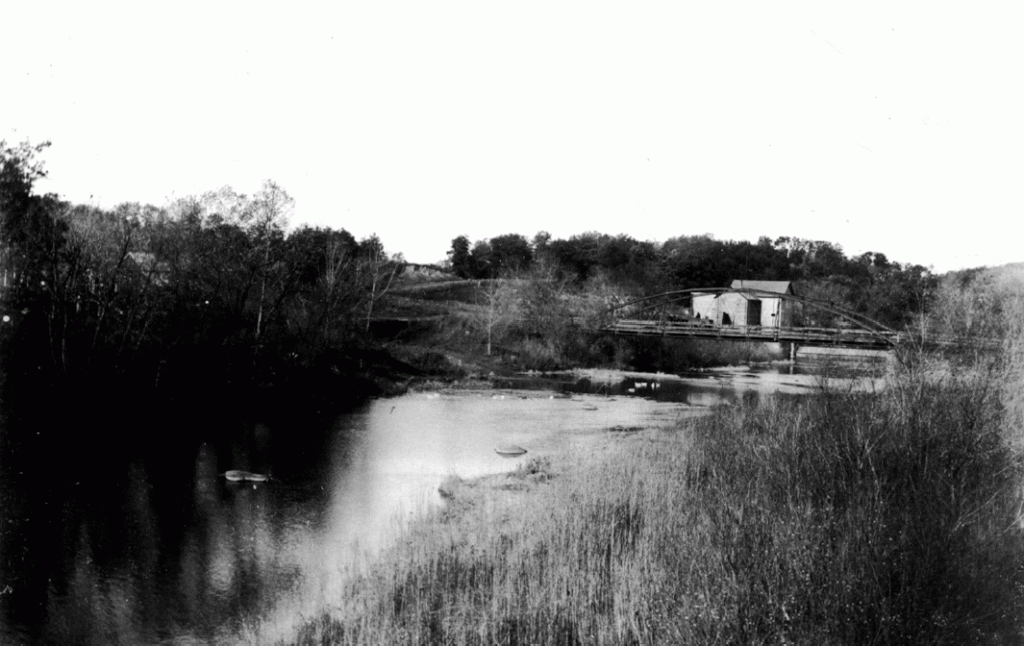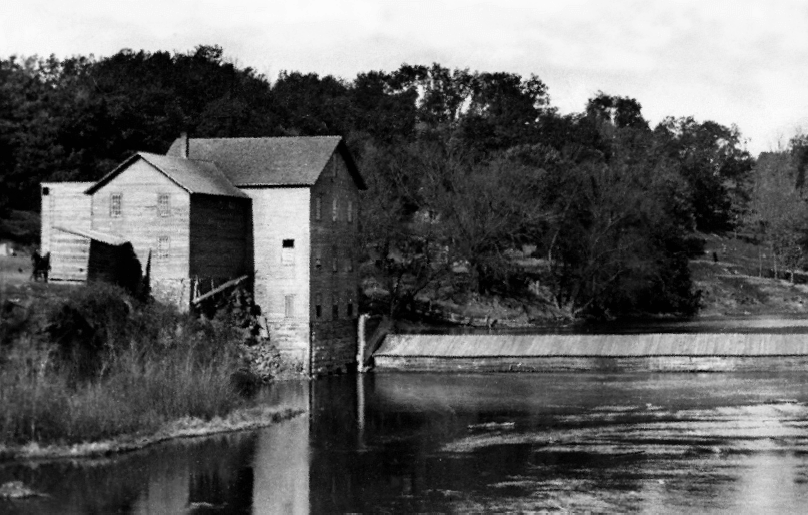
SRHS
Steamboat Rock Historical Society
Growing Beyond Their Dreams
Sawmill Becomes A Grist Mill
In the spring of 1857, S.F. Lathrop purchased the town’s first sawmill. Mr. Lathrop had a new plan for the mill and dam. His intentions were to convert the property from a sawmill to a grist mill. While there was still a demand for lumber, Lathrop felt that other mills in the area could fill that purpose. He also knew that at this time the principal grain grown in the area was wheat, and the need for a flour mill was becoming even greater, and by being “first” and “best,” money could be made.
Lathrop immediately began to build a 32’ x 40’ grist mill that was three stories in height at the tremendous cost for that day of $10.000.
The mill had two runs of burrs, with a capacity of 125 barrels a day. In 1862 the dam was washed out and the old sawmill was swept away. Lathrop replaced the dam but did not rebuild the sawmill. In 1867, the dam was again washed out and rebuilt in a more substantial manner.


The mill was highly important to the growth of the town. Everyone needed flour and were willing to travel a great distance to have their wheat ground into flour. Stories were told that at one time Steamboat Rock had seven livery barns in the town. The reason for so many is said to have been the mill. Local people as well as those from a great distance came after harvest to have their wheat ground into flour. Wagons loaded with farmers wheat (usually about 40 bushel) were lined up from the mill as far back as where the depot stood waiting their turn. Those in line when the mill shut down for the day, would unhitch their horses, leave their wagons and go to one of the livery barns and sleep there until the next morning when they would once again take their place in line.
Steamboat Rock did not have the only mill in the county, but it was by far the best. Many communities did not have mills because they had no river, Cleves, Ackley, Wellsburg, Holland to name a few. Ackley did have a steam powered mill in the 1870s.
© 2020 Steamboat Rock Historical Society | All Rights Reserved
Powered by Hawth Productions, LLC